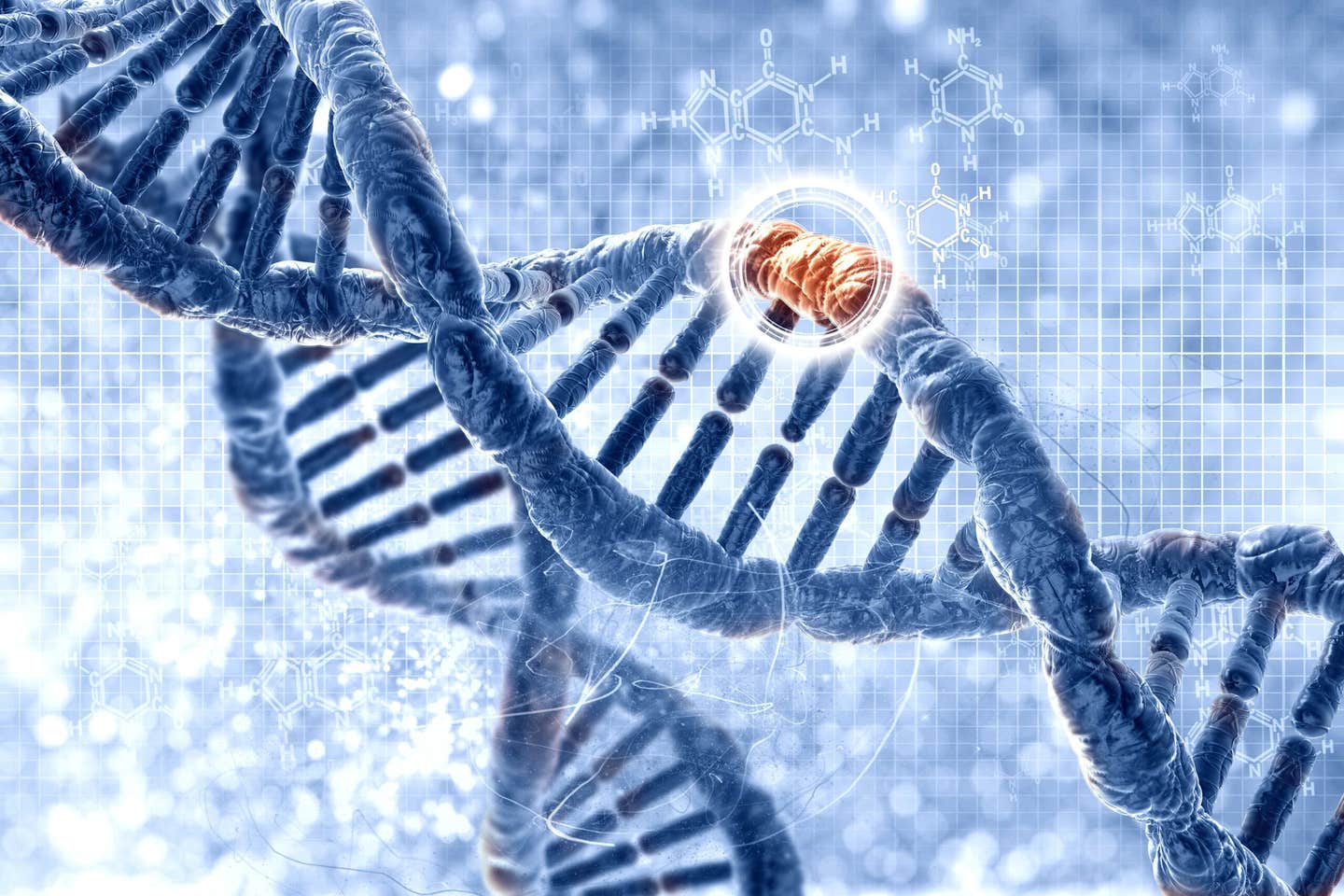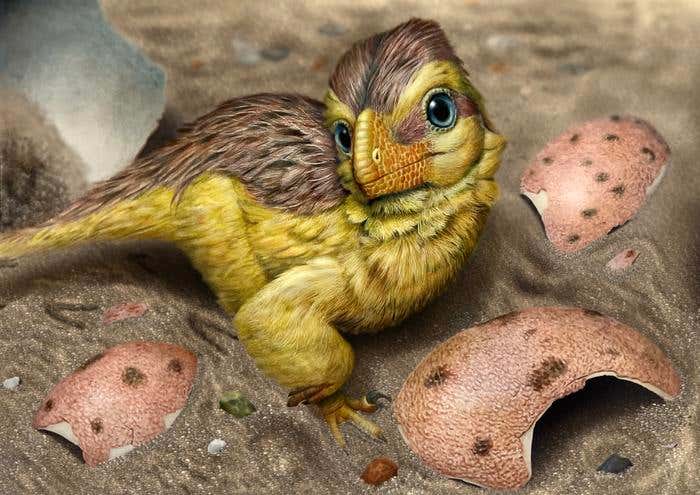How fast does human DNA mutate? Scientists finally know
New research maps how DNA mutates from parents to children, revealing insights into disease, evolution, and human variation.

Scientists reveal the speed and pattern of DNA changes over generations in a major new human genetic study. (CREDIT: CC BY-SA 4.0)
A deeper understanding of how DNA changes over generations helps scientists learn why people differ and how diseases develop. Until recently, many fast-changing parts of the human genome remained hidden. Now, researchers have taken a major step forward in solving that mystery.
Using cutting-edge DNA sequencing, scientists from the University of Utah have built the most complete picture yet of genetic change from one generation to the next. They studied a large four-generation family and found surprising patterns in how mutations appear and spread through DNA.
This new research shows that some sections of the genome mutate far more rapidly than others—sometimes at almost every generation. These findings can help doctors better understand inherited diseases and the risk of passing them on. They also offer new insights into how humans have evolved.
How Researchers Measured Genetic Change
A team of scientists used five powerful DNA sequencing technologies to look closely at each person's full set of genes, or genome. These methods included both short-read and long-read sequencing, which allowed them to spot both tiny and large genetic changes.
They analyzed DNA from a 28-person family that has been part of genetic studies since the 1980s. This family includes four generations, making it possible to track changes in genes over time. Thanks to their ongoing partnership with researchers, the family’s DNA has become one of the most valuable tools in human genetics.
With this information, the team was able to piece together more than 95% of each individual’s genome. This near-complete view allowed them to see both common and rare changes that occur naturally from parent to child.
“We saw really interesting stuff in this one family,” says Aaron Quinlan, a human genetics expert involved in the study. He adds that the next step is to ask, “How generalizable are those findings across families when trying to predict risk for disease or how genomes evolve?”
Related Stories
Nearly 200 New Changes Per Person
On average, every person has around 200 new genetic changes that neither parent has. These are called de novo mutations, or DNMs. They can be as small as a single DNA letter or as large as entire segments of repeated sequences.
The researchers found an average of 98 to 206 DNMs in each child. These included about 74.5 single-letter changes, 7.4 insertions or deletions (called indels), and about 65.3 changes from repeated sequences like short tandem repeats. They even found an average of 4.4 changes in the centromere, the central part of chromosomes that helps with cell division.
For male children, there were also about 12.4 new mutations found on the Y chromosome in each generation. Some parts of the genome showed very high mutation rates. In fact, 32 specific spots mutated again and again through the generations. These fast-changing areas included short tandem repeats and other repeated DNA patterns. "These were previously untouchable,” says Quinlan. With better tools, researchers can now examine them in high detail.
A Strong Role for Fathers
The team also looked at where the changes came from. They found that 75% to 81% of DNMs in the germline—the DNA passed from parent to child—come from the father. This pattern held true across almost all types of mutations. The reason is that sperm cells go through more divisions than egg cells before they’re passed on. Each division adds a chance for a copying error, or mutation, to happen.
Still, not all changes come from the sperm or egg. About 16% of single-letter DNMs happened after fertilization. These postzygotic changes affect early cell divisions and show no bias between mothers and fathers. Some of these might lead to what are called mosaic mutations, where different cells in the same person have different DNA.
Not All DNA Mutates the Same Way
The mutation rate varies a lot depending on the type and structure of DNA. Regions with repeated sequences—especially short tandem repeats and variable-number tandem repeats—mutated more often. These areas are much more likely to change with each generation.
In total, the team assembled 288 centromeres and six full Y chromosomes across the family members. They learned that mutation rates in these areas depend on factors like sequence length, repeat content, and how similar the repeated sections are.
Despite having a high-resolution recombination map, which shows where genetic crossover happens during reproduction, the team found no link between these crossovers and structural mutations. That means crossover events, where DNA segments from parents mix, don’t seem to directly cause structural changes.
Why These Findings Matter
Mutations are the reason humans are different from each other. “It’s mutations that ultimately differentiate us from other species,” says Lynn Jorde, a human genetics professor and study author. “We’re getting at a very basic property of what makes us human.”
Over generations, mutations have shaped traits such as eye color, the ability to digest milk, and even risks for rare diseases. Knowing how fast these mutations happen is critical to understanding how people evolve and how inherited diseases develop.
“This is something you really need to know—the speed at which variation comes into our species,” Jorde explains. “All of the genetic variation that we see from individual to individual is a result of these mutations.” This kind of knowledge helps doctors and genetic counselors.
For example, if a child has a genetic disease caused by a new mutation in a hotspot, parents likely won’t pass it to another child. But if a mutation is inherited, future children might also be affected. The new data helps answer that question by identifying whether a mutation likely came from a parent or appeared for the first time in the child.
Opening the Door to New Discoveries
The researchers plan to make their data publicly available. This will allow others to use it in future studies on evolution and genetic disease. Having such detailed information can lead to better ways to predict disease risk and may even help develop new treatments.
The team also hopes to use their sequencing approach on more families. This would help show whether other families have similar mutation rates and patterns. By comparing more family groups, researchers could find differences linked to age, environment, or other factors. This would deepen our understanding of the causes and effects of DNA changes in humans.
“A large family with this breadth and depth is an incredibly unique and valuable resource,” says Deborah Neklason, another researcher on the team. “It helps us understand variation and changes to the genome over generations in incredible detail.”
Thanks to this project, scientists now have a clearer view of one of biology’s most important questions: how and why human DNA changes over time.
Research findings are available online in the journal Nature.
Note: The article above provided above by The Brighter Side of News.
Like these kind of feel good stories? Get The Brighter Side of News' newsletter.



